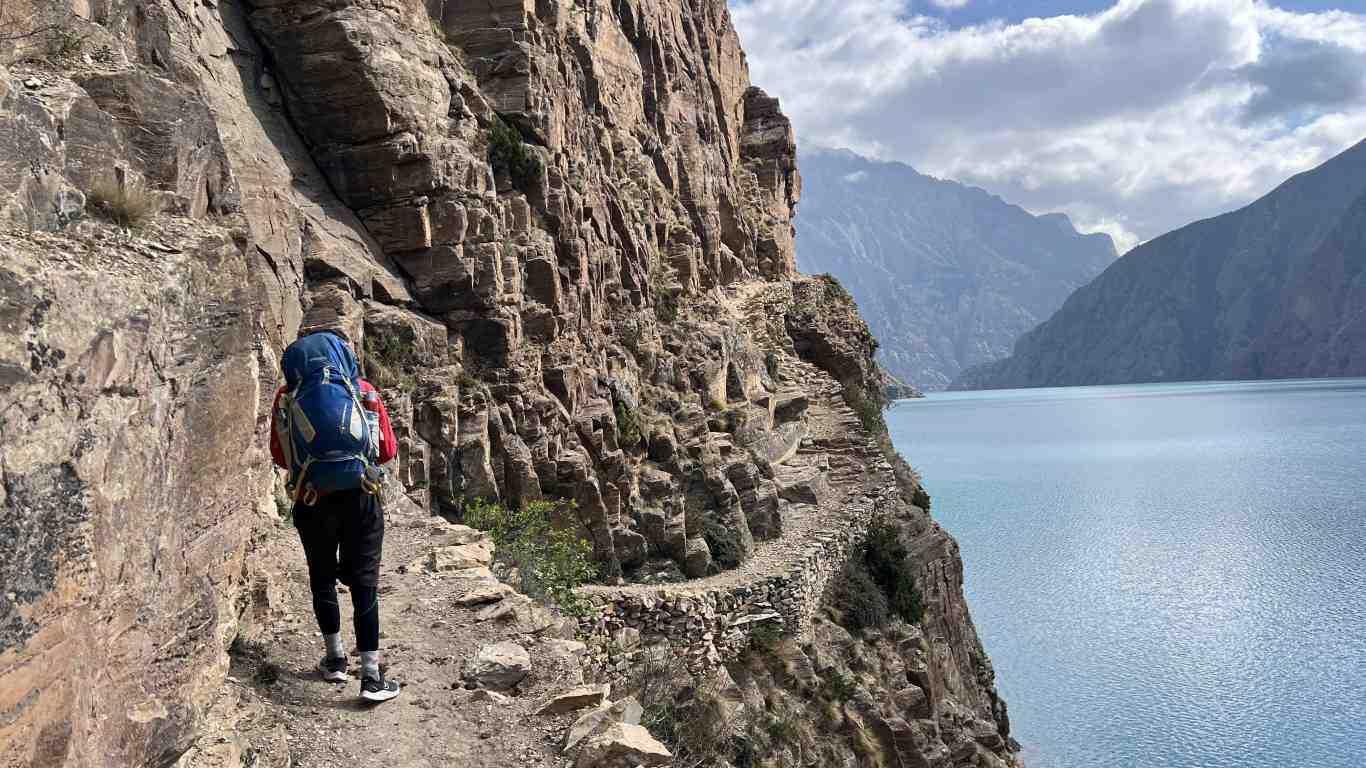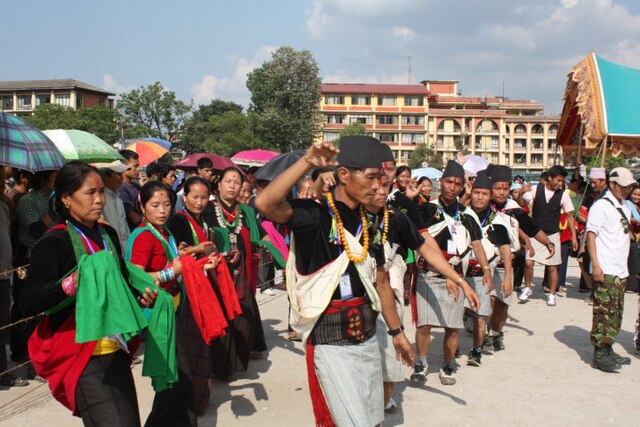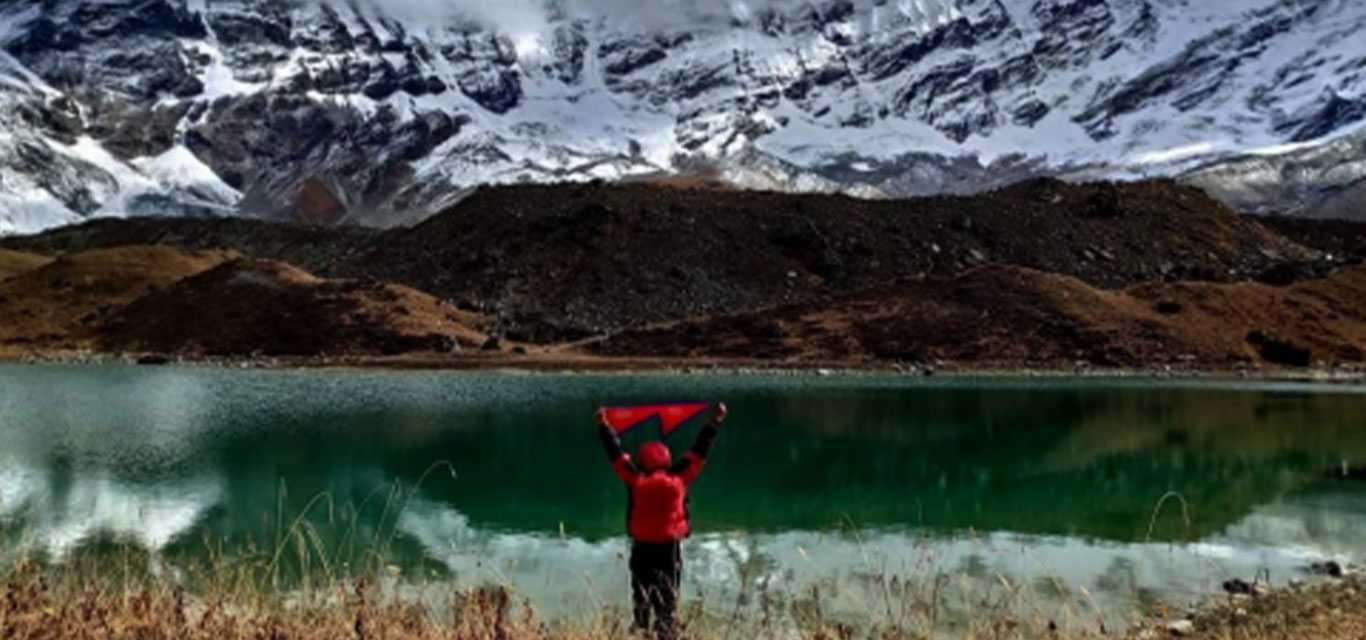Mystic Rukum: Bhume Festival Unveiled

Kham Magar Shaman during Bhume Festival
Located around 300 km from the capital city of Kathmandu lies the untouched beauty of Nepal, Rukum. It is located in the mid-western development region and belongs to Karnali Province as well as Lumbini Province partially.
This hidden gem is rich in ethnic diversity, but among them all, the Kham Magar Tribe, the pride of Rukum culture. Agriculture, animal husbandry, and the trade of medicinal herbs like Yarshagumba run the economy of this region.
Taksera, a combined village of two small villages (Tak and Sera), is one of the most popular attractions of Rukum. These villages are separated by the Uttarganga River and can be seen facing one another.
The village comprises 300 to 400 houses built on top of one another. It is believed that the houses were built 1000 years ago. And what makes these ancient houses unique is that the roofs and the streets are the same.
The architecture is unique, unseen anywhere else in the world. This village is also home to hundreds of Shamans, making it Nepal’s 1 most populated Jhakri (Shaman) village.
Gurung, Tamang, Magar, Rai, Limbu, and Kirat belong to the tribe of the Shamans, and Magar, especially the majority of Kham Magar, are considered superior among the Shamans.
Bhume festival is considered the main festival in Rukum and is celebrated on the first of Shrawan (mid-July), Maghe Sankranti (mid-January), and during Buddha Purnima, which falls in April.
You will see:
Bhume Festival
The preparation for the Bhume Festival begins one month before the main festival. One day before the festival, the locals put spells on the lit flames and put them outside their houses. It is believed that it would keep them safe from scabies.

On that day, home-grown crops like corn, cucumber, beans, etc, are offered to the deities. Every household throws away fire since it is believed that it is done to weaken the devil’s spirit.
On the day of the festival, before leaving the house, the Shaman binds the body of the “Chummi” (Shaman’s main helper) with Tantric Mantras, meaning casting a spell, as it is believed that the ghost is inferior to Shamans.
They then carry Jhakri (Shaman) items and go to the location where instruments are being played. A fire is then started, where Jhakri lights their items on the flame.
Then, after the Jhakri comes with a spear. They all start dancing without wearing their traditional Jhakri Costumes at first. After dancing for about 9 rounds, they finally wear the costume. The ancient spirit is believed to be awoken after the mantra is chanted upon wearing the costume.
When the spirit enters the Shaman’s body, they start shaking. Then, after they help to maintain each other’s planetary position. After its completion, they dance for another 9 rounds, and during this process, people are gently hit with nettle leaves.
It is believed that the purpose of hitting oneself with nettle leaves is to chase away the invisible demon present in one’s body. Hence, no one gets mad while getting hit by it. After completing nine rounds, the main Shaman goes to an empty river to cast out the ghost.
He then chants the Matras with promises to carry the spirit. If any Shaman goes there without chanting mantras and making promises, then it is believed that the spirit attacks back.
Every year, one Shaman is chosen by the deities to perform this ritual. After the demon is washed away in the river, the Shaman returns to the village, and the festivities begin.
Upon arrival, the Jhakris carry chicken, and they go from house to house carrying people on their backs. The main Shaman runs around the village, and they go to the invited houses first.
They are not allowed to go to a non-invited house blindly. Upon the arrival of the Jhakri, the homeowner offers him a live chicken, to which he performs protection spells and offers it to the demon and deities.
Later, the chicken meat is used as Prasad (blessing) and consumed by everyone in the family, as well as the Shaman. Similarly, the feathers from the chicken can also be used to make Jhakri’s Costume. Then those who drink are offered homemade traditional alcohol.
After that, the Jhakris gather and celebrate. After enjoying it for a while, they go to a house where everyone is gathered to eat the local vegetables together. It is a tradition to end the feast by eating home-grown spinach.
Also Read: Festivals Celebrated in Nepal
More than 1000 chickens are offered throughout the village during the fest with the hope that they will be saved from the ghost spirits so they can live a long life ahead.
Mythology Behind Bhume Festival
According to myth, there was once a spirit named “Kana Surphanke” during ancient times. The spirit began to haunt the people passing this place, as well as assassinating more than a dozen locals every year.
After being haunted many times, the locals got fed up. Gharti and Darlami Pun, who at the time arrived from Sinjakot, had buried the spirit on the bank of the Kir River, also called Majherbang.
Later, the spirit was moved to the bank of the Khali River near Lugum village. People believe that the spirit was moved in a large village so that no human soul would suffer in any way. To appease this demonic spirit and fulfill all the conditions, the Shaman festival is celebrated.
The Samans are connected in both scientific and spiritual aspects. They are capable of healing ill people with the help of medicinal herbs, as well as washing negative spirits from people by casting spells. Hence, the Jhakris are backed up by scientific knowledge too.
Also Read: Shey Festival
Tourism Prospect in Rukum
Bhume Festival has broadened the scope for tourism aspects as well. The number of Local and International tourists is increasing every year.
People from all around are interested in watching the festival. Bhume Rural Municipality is doing its best to support the promotion of the festival.
They have planned to promote and develop Rukum with its perseverance and promotion in the future. Hopefully, in the coming days, the Shaman Festival will take the cultural tourism sector of Bhume Rural Municipality to new heights.
Rukum is not only famous for its diverse culture, but there are a lot of activities that can be enjoyed here. The place is a portal to Yarsagumba hunting.
It is also a gateway to various mountaineering and adventure trekking. One of the most popular trekking routes, known as the Guerrilla Trail trek, is also present here, making it a perfect place for adventure enthusiasts.
It is a lively place to experience war museums, too. Many wild herbs are also found here and can be used in making medicines.
People can learn more about the Magar, especially the Kham Magar, regarding their culture, tradition, and history. The place is a must for all adventure enthusiasts and also for people who are interested in learning more about Nepali culture.
Also Read: Mustang Tiji Festival Tour
Conclusion
In conclusion, Rukum is a very beautiful and diverse village. It can be explored at any time of the year. Being a remote area, the culture of Rukum is protected within itself.
Although Rukum lacks major developments, it's still one of the few places that one should not miss. The shamans can learn and show their skills, and also remain protected. Hence, they can practice Shamanism rituals and live here freely and peacefully.


